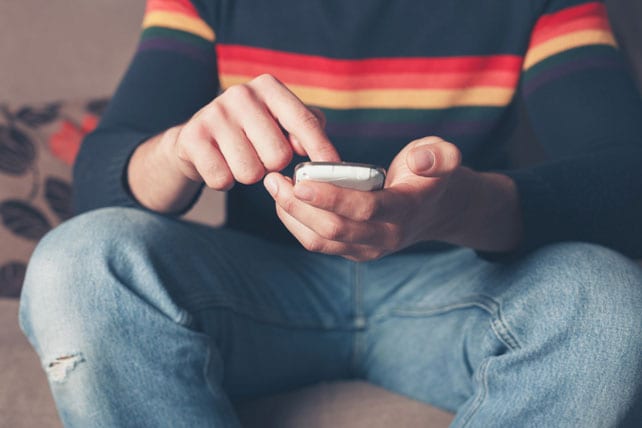Smartphones and social media will cure the epidemic of widespread loneliness. Or so we thought. We would all be connected, all together, all the time, and none of us would ever feel alone. But the harsh truth is we could always be lonely, even lonely in a crowd, and now lonely in a digital crowd.
We send texts and pictures and videos and tweets and Facebook updates and we refresh and wait … often to a blank screen. No responses, or very few. But at some point, when we hit refresh and stare at a screen with no new updates, it can feel like no one is on the other side of the line. We feel loneliness in the middle of online connectedness.
In reality, “it’s a lonely business, wandering the labyrinths of our friends’ and pseudo-friends’ projected identities, trying to figure out what part of ourselves we ought to project, who will listen and what they will hear” (Marche, “Is Facebook Making Us Lonely?”).
But it’s a chicken-and-egg question. Does Facebook attract the lonely, or does Facebook make us lonely? That is a debate I cannot solve. What is clear is that we have given up thinking that Facebook will end our loneliness.
Technology and Isolation
In the big picture, technology offers us many benefits, but with a serious side to our isolation, writes Stephen Marche. “The problem is that we invite loneliness, even though it makes us miserable. The history of our use of technology is a history of isolation desired and achieved.”
Exactly. The long story of isolation desired and achieved is a story told by Giles Slade in his book The Big Disconnect: The Story of Technology and Loneliness (2012). He shows many strands of how technology and loneliness have unfolded together in the history of various innovations, from street peddlers to phones to television and music.
As technology improves, people are replaced by automation. Street vendors give way to vending machines. Milk deliveries give way to refrigerators. Bankers give way to ATMs. Central heating means we no longer congregate around a fireplace. Newspapers meant absorbing news by shielding ourselves, not by gathering for the latest word-of-mouth at a pub. Technology draws us apart.
Isolation was made possible by advances in video. The community cinema gave way to a large shared television in each family’s home, which gave way to portable televisions, and now personal LED TVs in every bedroom.
iPods and Earbuds
When it comes to music, this technological trajectory is even clearer. The live symphony on a Saturday evening was, for many people, replaced by the stationary phonograph (record player) in the family room, which was replaced by a large transistor radio, which was replaced by a portable transistor radio, which was replaced by a boombox with open speakers over the shoulder, which was replaced by a Walkman clipped to the waist, which was replaced by a tiny iPod clipped to the sleeve. Music went from a social community experience, to a shared family experience and now to a personal headphones experience.
Many different strands of technological innovation have come together in the smartphone—the supreme invention of personal isolation. Our smartphones are a portable shield we carry in public in order to deter human contact and interaction. We step into an elevator with a stranger, and what is our immediate impulse?












